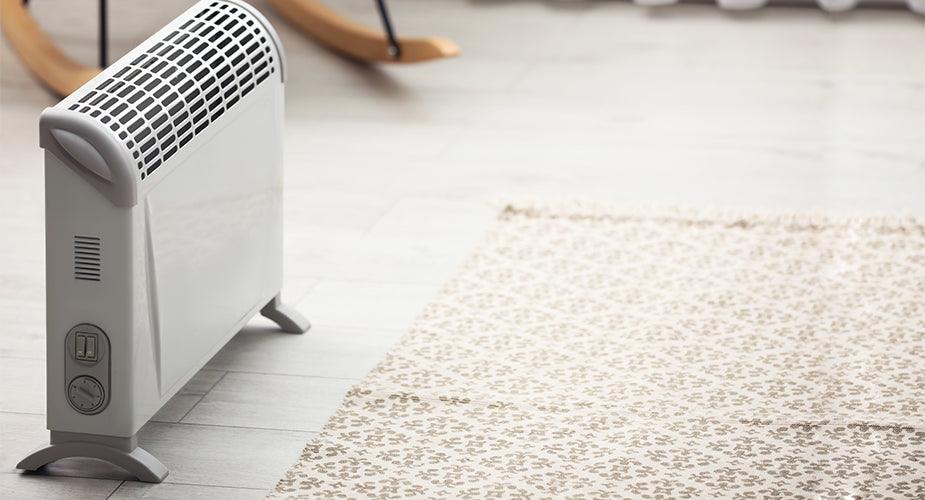California residents are experiencing temperature extremes, wildfires, and increasingly escalating energy prices. Fortunately, many people have some agency over their electric bill by learning to avoid the higher time-of-use market rates and to use the best energy consumption reduction techniques. Let’s look at where the average electric bill in California falls and then see how residents can get some relief from their costly energy bills.

California residents are experiencing temperature extremes, wildfires, and increasingly escalating energy prices. Fortunately, many people have some agency over their electric bill by learning to avoid the higher time-of-use market rates and to use the best energy consumption reduction techniques. Let’s look at where the average electric bill in California falls and then see how residents can get some relief from their costly energy bills.

What Is the Average Electric Bill in California?
One influence pushing up electric bills could be the state’s time-of-use rates, which make rates higher when people use electricity the most. The “peak use” times that have the highest electricity rates are from 4 to 9 PM. They start right when people are returning home from work and kids are returning home from school and last through the “prime time” TV hours only going away when people start going to bed.
Additionally, the most common utility providers in the state, such as Pacific Gas and Electric (PG&E) and the Los Angeles Department of Power and Water (LADWP), charge vastly different rates. While household bills of around $200 per month may be normal to some, others may experience double this amount depending on their provider, neighborhood, use schedules, and number of people in the home among other factors.
According to the International Energy Agency’s Residential Energy Consumption Survey, California averages these numbers in the main categories of end-use electricity consumption across households:
- Air conditioning: 5.6 MMBtu
- Refrigeration: 2.8 MMBtu
- Space heating: 14.8 MMBtu
- Water heating: 16.3 MMBtu
- Other electricity uses: 17.6 MMBtu
This shows the places where households are using the most power. Other electrical categories could include electric vehicle chargers, personal electronics, TV viewing and lighting.
How Do High Energy Costs Impact Struggling Communities?
Everyone in the state should have access to affordable, clean energy, however, around 29.56% of people in California say they do not earn enough to cover the cost of living essentials. This signifies a systemic issue. Efforts like the California Solar Mandate are the reason new builds must have solar photovoltaics pre-installed. This is a good thing to make clean solar power more widely available – which is a good thing for the environment – however the mission does not help lower-income communities or middle-class consumers living in already existing structures.
At the end of 2023, state regulators raised utility rates even though many struggled amid natural disasters and wild temperatures. The approval granted PG&E to boost average monthly costs by $22.20 for customers who only purchased electricity. While this puts pressure on the median income homeowner or renter, it disproportionately impacts less privileged demographics.
It adversely impacts immigrant families, people with disabilities on a fixed income, and other lower-income populations, as they often shoulder multiple jobs while paying thousands in rent monthly. In 2024, the California Public Utility Commission began working to fix these disparities with two assistance programs — California Alternate Rates for Energy (CARE) and Family Electric Rate Assistance (FERA). It is an income-based system that can reduce rates by up to 7 cents per kWh.
The push to use renewable energy like solar and wind will be the reason prices eventually lower across the state for everyone, regardless of income, because the sun and wind are free, and they are a renewable source of energy (the sun comes up every day and the wind is usually blowing.) The more that utility companies invest in renewable energy solutions, the lower everyone’s energy prices will go. The more homeowners who invest in rooftop solar with energy storage systems, the more burden they remove from the state’s electric grid -- meaning that the utilities will not have to invest in more costly infrastructure to meet higher energy use demands.

What Can You Do to Bring Your Electric Bills Down?
Test these techniques to see if they help reduce your electricity bills. Most of the strategies could benefit buildings in both warm and cooler months, while others are specifically targeted for high or low temperature periods. Additionally, some tips require more labor and financial resources than others, though there are options for living situations for all demographics and backgrounds to make paying the monthly electricity costs less daunting.
Sealing Air Leaks, Insulation and Weatherstripping
Tons of cool and warm air escape through tiny cracks and gaps in the house. Go throughout the building and feel for drafts in doors, windows and seals. Insulation ratings for older homes could be out of date, meaning that now certain areas require a higher R-value rating for insulation in a home than they used to. Also, older insulation may have suffered degradation, meaning it may have gotten wet or packed down which may lead to poor thermal performance. Looking for these kinds of issues and fixing them could help you reduce your electric costs.
Using Decor as an Advantage
A fixture as simple as curtains or window coverings could make a huge impact when maintaining internal temperatures. Thermal curtains could reduce heat loss by 25% during cooler months by keeping the warmth in. Conversely, cellular shades could similarly reduce the solar heat gain quotient for your home in the summer by up to 60% by reflecting the sun back outside.
Get an Energy Audit
Some energy companies offer this service for free, but if they do not, the Energy Efficient Home Improvement Credit allows people to qualify for a $150 tax credit. A professional can come into the home and tell residents what devices use the most power and what they can do to lower their bills.
Take Shorter, Smarter Showers
Water heating uses copious amounts of power and resources. If people could change out their shower heads for low-flow fixtures and reduced shower time, then water heaters do not have to use as much energy. People can also adjust the temperature on their water heater, so the temperature is still comfortable but it saves money.

Buy a Portable Renewable Energy Generator
Homeowners and renters alike can buy affordable portable solar generator systems to help take the burden off the state’s electric grid at peak use times and can also help them save money on their energy bills. While these portable generators come with portable solar panels, many can also be charged from a wall outlet during periods when electricity is cheaper and stored in the battery for use during a time when electric rates are high. People just need to plug their TV or refrigerator into the generator during higher time-of-use rates to take that device or appliance “off the grid” for those higher rate hours.
Ask for Help
Many energy providers, governments and local programs are willing to help people get access to tools like energy-efficient light bulbs and even bill discounts. LADWP is one that offers free efficiency tools, and initiatives like the Low-Income Weatherization Program help people get access to solar. If you are a homeowner, you may qualify for the federal solar tax credit. This credit is taken against the income taxes you pay if you install a solar energy system in your home. Do some research to see what other incentives are available for your situation.
Use Nature
Green roofs are powerful resources for lowering building temperatures and reducing the urban heat island effect. Even gardens and smart landscaping are options to help combat climate change.
More Suggestions
Here are a few other small actions to make a large impact:
- Use cooler water to wash clothes
- Unplug devices when not in use to avoid “energy vampires”
- Use a fan rather than an air conditioner when possible
- Use smart devices that are energy efficient
- Replace air filters because dirty air filters can waste power
- Put on or take off layers of clothing rather than turning the heat up or down.
Controlling Californian Consumption
The average electric bill in California can go down if citizens work together and each does what they can to contribute to the effort, Small actions make a monumental difference on a collective scale, and it benefits consumer’s wallets and the environment. If we can help reduce energy consumption statewide, then we can help fight climate change and make sure the world we pass on to future generations will still be livable.
By each of us doing whatever we can, whenever we can, to reduce our energy use, including transitioning to clean renewable energy solutions -- like using wind and solar power -- it will provide long-lasting benefits for all residents in the coming years as global warming and climate volatility threatens natural balances.
The solution requires utility companies to do their part to keep pricing fair by offering energy justice and rate assistance for their lower-income customers struggling to make ends meet. And it requires legislators to look at long-term renewable energy solutions including incentives for homeowners who can install renewable energy systems. When homeowners install solar in their homes, they immediately take burden away from the electric grid which allows utilities to avoid having to overbuild infrastructure (which is costly) just to meet peak demand usage.
In the long run, every time a homeowner installs rooftop solar, or a renter uses a portable solar generator system to avoid peak-time-of-use rates, it relieves pressure on the state’s electric grid which helps everyone avoid rolling blackouts when there’s not enough energy to meet consumers’ demand. If everyone does what they can to reduce their own energy consumption or transition to clean renewable energy sources, then we can keep everyone’s energy bills lower and keep our state’s carbon footprint smaller -- which in turn will keep our world more livable both now and in the future.
Rose Morrison
Author
About The Author
Rose is the managing editor of Renovated and a freelance writer with over five years of experience.
She's most interested in researching topics on sustainable construction, such as new technologies and innovations in the built environment. She also loves sharing home projects and inspiration for even the most novice DIY-ers. Rose's favored topics and values stem from growing up in a family of contractors.
When she isn't writing, you'll find her baking something to satisfy her never-ending sweet tooth and spending time with her cats. For more about Rose, you can reach out on LinkedIn and check out her portfolio online.













